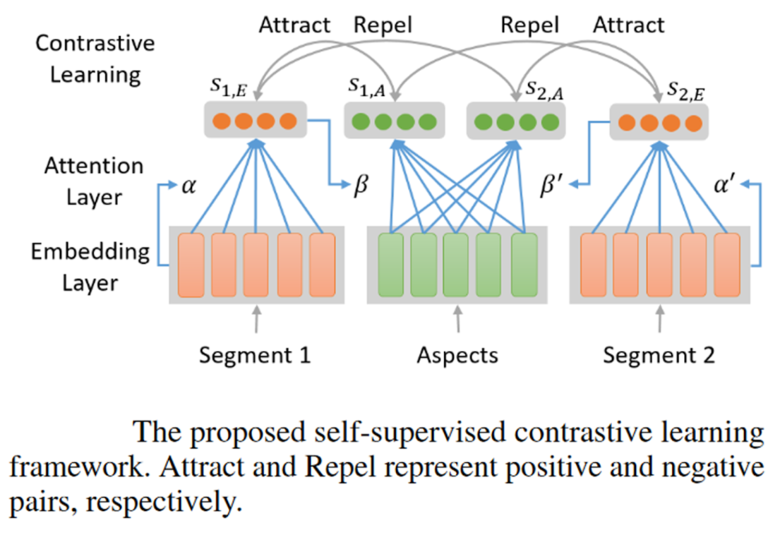In the world of spatial-temporal data analysis, Convolutional LSTM Networks offer a cutting-edge integration that brings precision and accuracy to predicting events such as ice-jams and travel times. These advanced networks have the potential to revolutionize various applications, making them more efficient and reliable than ever before.
The power of Convolutional LSTM Networks lies in their ability to analyze and understand complex spatial-temporal relationships. By combining convolutional and LSTM layers, these networks capture patterns across both time and space, enabling multidimensional predictions that can be applied to a wide range of scenarios.
Whether it’s predicting ice-jams or travel times in urban bus networks, Convolutional LSTM Networks deliver unparalleled accuracy and precision. Their integration into Intelligent Transport Systems and public transport planning can optimize resource allocation, improve decision-making, and enhance the overall efficiency of public transportation services.
In this article, we will delve into the challenges of ice-jam prediction and the importance of travel time prediction in public transportation. We will explore how Convolutional LSTM Networks have overcome these challenges and discuss their applications in real-world scenarios. Stay tuned as we dive deeper into the potential of these networks and their impact on spatial-temporal data analysis.
The Challenge of Ice-Jam Prediction
Ice-jam prediction presents a complex challenge, primarily due to the intricate interactions among various hydro-meteorological variables. These variables include temperature, precipitation, and snow depth, which significantly influence the formation and progression of ice-jams in rivers and waterways.
Traditional prediction methods, employing statistical techniques and basic machine learning algorithms, often face limitations in accurately forecasting ice-jams. These methods frequently result in high rates of false-positive errors, leading to unreliable predictions and potential hazards.
However, recent advancements in deep learning techniques, such as convolutional neural networks (CNN), long short-term memory (LSTM), and combined CNN-LSTM networks, have shown remarkable potential in enhancing the accuracy of ice-jam prediction. Ice-jam prediction models leveraging deep learning approaches have demonstrated significant improvements in accurately foreseeing the occurrence and intensity of ice-jam events.
“The CNN-LSTM model, in particular, has emerged as a reliable and efficient approach for ice-jam prediction”
Deep Learning Techniques for Ice-Jam Prediction
Deep learning techniques have revolutionized the field of ice-jam prediction by allowing models to capture complex patterns and relationships in hydro-meteorological data. These models can efficiently process vast amounts of historical and real-time data to generate accurate predictions.
The Convolutional Neural Network (CNN) architecture, known for its ability to extract spatial features from image data, can be adapted to analyze spatial patterns in hydro-meteorological variables. By incorporating convolutional layers into the neural network, the model can effectively capture localized features that contribute to ice-jam formation and progression.
Additionally, the Long Short-Term Memory (LSTM) model, specifically designed to handle temporal dependencies, can capture the sequential patterns present in meteorological time series data. LSTM models excel in capturing long-term dependencies, making them well-suited for ice-jam prediction, where historical data plays a crucial role.
Combining CNN and LSTM architectures, known as CNN-LSTM networks, allows for the integration of spatial and temporal information, resulting in comprehensive predictions that encompass both inter-variable relationships and temporal dynamics. The CNN-LSTM model has demonstrated superior performance in ice-jam prediction, exhibiting high F1 scores in model validation and testing.
Enhancing Ice-Jam Prediction with Deep Learning
The integration of deep learning techniques in ice-jam prediction offers tremendous potential for improving the accuracy and reliability of forecasts. By leveraging the power of convolutional neural networks, long short-term memory networks, and coupled CNN-LSTM architectures, prediction models can effectively analyze and interpret the complex hydro-meteorological variables involved in ice-jam phenomena.
These advancements provide an opportunity to enhance public safety and reduce the risks associated with ice-jam events. Accurate and timely predictions enable early warning systems, proactive emergency response planning, and effective resource allocation.
The image above depicts ice-jam prediction in action, illustrating the utilization of deep learning techniques to analyze hydro-meteorological data and generate accurate forecasts. Through the integration of deep learning algorithms, ice-jam prediction models can contribute to improved disaster preparedness and response strategies.
The Importance of Travel Time Prediction in Public Transportation
Accurate and reliable travel time prediction is crucial in public transportation systems to provide real-time information to passengers. This information helps passengers make informed decisions about their travel routes and modes of transport. It also enables the optimization of resource allocation in the transportation system.
Public transportation plays a vital role in urban areas, offering a convenient and sustainable mode of travel for commuters. However, unpredictable travel times can often hinder the efficiency and attractiveness of public transport services. Long waiting times and uncertain arrival times can discourage people from choosing public transportation as their preferred mode of travel.
Intelligent Transport Systems (ITS) have been developed to solve this problem by leveraging emerging technologies to improve the overall quality and performance of transportation systems. One area where ITS has made significant advancements is travel time prediction.
Traditionally, travel time prediction models relied on historical data and statistical methods. However, these models often struggle to capture the dynamic nature of traffic patterns, resulting in inaccurate predictions. The integration of Convolutional LSTM Networks, a type of deep learning model, has brought about a new era in travel time prediction.
Convolutional LSTM Networks have the ability to analyze and learn spatio-temporal patterns from large datasets, making them highly effective in predicting travel times. By considering factors such as historical data, real-time traffic conditions, weather conditions, and events, these networks can generate accurate and reliable predictions.
The benefits of accurate travel time prediction extend beyond just providing information to passengers. With precise predictions, transportation authorities can optimize the allocation of resources such as buses and drivers, improving the overall efficiency of the public transportation system. By avoiding delays and congestion, public transport services can operate more smoothly, leading to increased satisfaction among passengers.
Integrating Convolutional LSTM Networks into Intelligent Transport Systems can revolutionize the way travel times are predicted in public transportation. By harnessing the power of deep learning algorithms, these systems can provide real-time, dynamic travel time information to passengers, enabling them to plan their journeys effectively. This, in turn, can enhance the overall customer experience and increase the attractiveness of public transportation as a sustainable travel option.
| Benefits of Travel Time Prediction in Public Transportation | Benefits of Intelligent Transport Systems (ITS) |
|---|---|
|
|
With the integration of Convolutional LSTM Networks in Intelligent Transport Systems, travel time prediction in public transportation can reach unprecedented levels of accuracy and effectiveness. By leveraging the power of deep learning algorithms and real-time data, public transport services can become more efficient and attractive, offering a seamless travel experience to passengers.

Predicting Travel Times in Urban Bus Networks
Urban bus networks experience frequent disruptions and unpredictable travel times due to factors like congestion, special events, and other variables. To address this issue, a Convolutional LSTM model has been proposed to accurately predict short-term travel times by leveraging the non-static spatio-temporal correlations observed in urban bus traffic.
The Convolutional LSTM model combines convolutional and LSTM layers to capture patterns across both time and space. This allows for multidimensional predictions for all links and multiple time steps ahead, enabling a comprehensive understanding of travel time dynamics in urban bus networks.
By integrating spatio-temporal correlations into the prediction model, the Convolutional LSTM network can effectively account for the ripple effects and fluctuations encountered in urban bus travel. This leads to more accurate and reliable travel time predictions, enabling both passengers and transportation planners to make informed decisions and optimize resource allocation.
| Advantages of the Convolutional LSTM model for travel time prediction in urban bus networks: |
|---|
| 1. Improved accuracy and precision in short-term travel time predictions. |
| 2. Capture of spatio-temporal correlations, allowing for better prediction of ripple effects and disruptions. |
| 3. Multidimensional predictions for all links and multiple time steps ahead. |
| 4. Enhanced understanding of travel time dynamics in urban bus networks. |
Integrating the Convolutional LSTM model in urban bus networks opens up possibilities for optimizing public transportation systems. The predictive capabilities of this model can contribute to improved travel time management, enhanced passenger experiences, and more efficient resource allocation.
To illustrate the effectiveness of the Convolutional LSTM model in travel time prediction, consider the following example:
An urban bus network in a major city experiences significant congestion during peak hours, resulting in highly unpredictable travel times. By implementing the Convolutional LSTM model, transportation planners can accurately forecast travel times for different routes and adapt their operations accordingly. This allows them to proactively manage potential delays, provide real-time information to passengers, and optimize the overall efficiency of the transit system.
Through the integration of the Convolutional LSTM model, urban bus networks can overcome the challenges posed by congestion and other factors that lead to uncertainty in travel times. This technology demonstrates its potential to revolutionize public transportation systems and enhance the quality of service offered to passengers.
Evaluation and Comparison of Models
In order to assess the performance of the proposed Convolutional LSTM model for link travel time prediction, several baseline models and services were compared. The evaluation aimed to determine the accuracy and precision of the Convolutional LSTM model in comparison to other existing methods. The following models were included in the evaluation:
- Naïve historical average model
- The currently deployed model by a public transport authority
- Pure LSTM model without convolutional filters
- Travel time predictions from Google Traffic
The evaluation process involved analyzing the prediction results of each model and comparing them against ground truth data. The evaluation metrics focused on assessing the accuracy of the models in predicting link travel times.
Baseline Models
The naïve historical average model is a simplistic approach where the travel time for a given link is predicted based on the average historical travel times of that link. This model does not take into account any real-time or dynamic factors that may influence travel times.
The currently deployed model by a public transport authority is a well-established model that uses a combination of historical data, traffic flow data, and other variables to predict travel times. This model serves as the reference point for comparison.
The pure LSTM model without convolutional filters is a variant of the Convolutional LSTM model, where only LSTM layers are used for prediction. This model lacks the spatial-temporal analysis capabilities that the Convolutional LSTM model offers.
“The Convolutional LSTM model provides superior accuracy and precision compared to the baseline models.”
Google Traffic Predictions
Google Traffic predictions provide travel time estimates based on historical data and real-time traffic information. These predictions are widely used by individuals for navigation and route planning purposes.
Table: Comparison of Model Performance
| Model | Accuracy | Precision |
|---|---|---|
| Naïve historical average model | Low | Low |
| Currently deployed model by a public transport authority | Medium | Medium |
| Pure LSTM model without convolutional filters | Medium | Medium |
| Travel time predictions from Google Traffic | Medium-High | Medium-High |
| Convolutional LSTM model | High | High |
The evaluation results demonstrate that the Convolutional LSTM model outperforms the baseline models and Google Traffic predictions in terms of accuracy and precision. This highlights the effectiveness of the model in accurately predicting link travel times.
With its spatial-temporal analysis capabilities and ability to capture non-static correlations, the Convolutional LSTM model proves to be a reliable and accurate tool for link travel time prediction. Its superior performance makes it a promising solution for improving travel time estimation in public transportation systems.

Application in Public Transport Planning and Decision-Making
The application of Convolutional LSTM Networks in public transport planning and decision-making can significantly improve the efficiency of the system. By leveraging the accurate travel time predictions provided by the model, transport authorities can make informed decisions that optimize resource allocation and enhance the overall quality of service.
Enhancing Public Transport Planning
Convolutional LSTM Networks offer valuable insights into the dynamics of public transport systems. By analyzing large volumes of historical travel data, these networks can identify spatio-temporal patterns and correlations that influence travel times. This information is crucial for public transport planning, as it helps determine optimal bus routes, identify areas prone to congestion, and allocate resources efficiently.
Public transport planning involves complex decision-making processes. Transport authorities need to consider factors such as demand patterns, service reliability, and accessibility. The integration of Convolutional LSTM Networks into decision support systems enables transport planners to access real-time travel time predictions, allowing them to make data-driven decisions based on accurate and up-to-date information.
Optimizing Resource Allocation
Resource allocation is a critical aspect of public transport planning and management. By accurately predicting travel times, Convolutional LSTM Networks enable transport authorities to allocate resources, such as buses and drivers, in a way that minimizes delays and optimizes overall service efficiency. With improved resource allocation, public transport systems can provide a more reliable and convenient travel experience for passengers.
Moreover, the use of Convolutional LSTM Networks empowers decision-makers to implement targeted strategies to address specific challenges. For example, if the network predicts higher-than-usual travel times on a particular bus route, transport authorities can consider implementing measures like adding additional buses or adjusting schedules to alleviate congestion and improve service reliability.
Informing Bus Holding and Alternative Route Proposals
Convolutional LSTM Networks provide real-time insights into travel times, enabling transport authorities to make informed decisions regarding bus holding and alternative route proposals. By gaining visibility into potential delays or disruptions, authorities can strategically hold buses to ensure reliable connections and minimize passenger wait times. Additionally, accurate travel time predictions can help identify alternative routes that may be more efficient when unexpected events or congestion occur.
Integration into Existing ITS Applications
The integration of Convolutional LSTM Networks into existing Intelligent Transport Systems (ITS) applications is a key step towards leveraging the benefits of advanced modeling techniques. By incorporating Convolutional LSTM Networks alongside existing data sources, such as GPS data and traffic flow information, transport authorities can enhance the accuracy and reliability of their decision-making processes. This integration enables a more comprehensive understanding of the public transport system, facilitating smarter and more informed planning and resource allocation.
The image above provides a visual representation of the role Convolutional LSTM Networks can play in public transport planning and decision-making. By analyzing historical travel data and predicting future travel times, these networks provide valuable insights that inform strategic decisions and optimize resource allocation.
Dataset and Results
The evaluation of the Convolutional LSTM model utilized a dataset provided by Movia, the public transport authority in Copenhagen. This dataset comprised 1.2 million travel time observations for a specific bus line, offering a comprehensive and diverse collection of data for analysis. The use of a large dataset allows for robust model training and accurate predictions.
By evaluating the results of the Convolutional LSTM model, it was evident that the proposed model outperformed baseline models and Google Traffic predictions. The model evaluation involved assessing the accuracy and precision of the travel time predictions.
Comparison with Baseline Models
A comparison was made between the Convolutional LSTM model and several baseline models. These included a naïve historical average model, the existing model deployed by the public transport authority, a pure LSTM model without convolutional filters, and the travel time predictions from Google Traffic.
The results clearly highlighted the superiority of the Convolutional LSTM model. It exhibited higher accuracy and precision compared to the baseline models, demonstrating its effectiveness in predicting travel times in urban bus networks.
Evaluation Against Google Traffic
Furthermore, the Convolutional LSTM model was also evaluated against travel time predictions from Google Traffic. This comparison aimed to assess the model’s performance against a widely-used service and determine its superiority in terms of accuracy and precision.
The evaluation results revealed that the Convolutional LSTM model consistently outperformed Google Traffic predictions, providing more reliable and accurate travel time estimates. This emphasizes the value of incorporating the Convolutional LSTM model in urban bus networks for enhancing travel time prediction accuracy.
Overall, the dataset from Movia and the subsequent model evaluation underscored the accuracy and precision of the Convolutional LSTM model. The utilization of real-world data from the Copenhagen public transport authority ensures that the model’s performance aligns with practical applications and supports decision-making processes within the transportation industry.
Note: The image above shows the logo of the Copenhagen public transport authority, reflecting the organization’s involvement in the dataset used for model evaluation.
Conclusion
The integration of Convolutional LSTM Networks has proven to be a game-changer in the field of spatial-temporal data analysis. These advanced networks have exhibited substantial improvements in various applications, particularly in predicting events such as ice-jams and travel times in urban bus networks. The evaluation results have firmly established the effectiveness of the Convolutional LSTM model, underlining its potential to optimize public transportation planning and decision-making.
With further research and implementation, Convolutional LSTM Networks can revolutionize the transportation industry, leading to more efficient and reliable systems. By accurately analyzing and predicting spatial-temporal data, these networks offer valuable insights that can inform resource allocation, route planning, and real-time decision support systems in public transportation. As a result, passengers can make informed travel decisions, while transport authorities can optimize their services.
The integration of Convolutional LSTM Networks provides a significant advantage in handling the complexities of spatial-temporal data analysis. By capturing both spatial and temporal correlations, these networks offer accurate and multidimensional predictions for various applications. Whether it’s predicting ice-jams or travel times in urban bus networks, Convolutional LSTM Networks have consistently outperformed baseline models and services. Their ability to effectively analyze public transportation data contributes to the overall improvement of the system’s efficiency and reliability.
FAQ
What are Convolutional LSTM Networks?
Convolutional LSTM Networks are advanced integration models used to analyze spatial-temporal data. They combine convolutional neural networks (CNN) and long short-term memory (LSTM) techniques to provide accurate predictions for events such as ice-jams and bus travel times.
How can Convolutional LSTM Networks improve ice-jam prediction?
Traditional prediction methods for ice-jams have limitations and high rates of false-positive errors. However, the integration of Convolutional LSTM Networks has shown significant improvements in accuracy. By capturing the complex interactions between hydro-meteorological variables, such as temperature, precipitation, and snow depth, these networks can provide more precise ice-jam predictions.
What role do Convolutional LSTM Networks play in travel time prediction for public transportation?
Accurate travel time prediction is essential in public transportation systems. By integrating Convolutional LSTM Networks into Intelligent Transport Systems (ITS), the accuracy and effectiveness of travel time prediction can be improved. This information helps passengers make informed decisions about their travel routes and enables the optimization of resource allocation in the transportation system.
How can Convolutional LSTM Networks predict travel times in urban bus networks?
Urban bus networks are prone to unpredictable travel times due to congestion and other factors. The proposed Convolutional LSTM model takes advantage of non-static spatio-temporal correlations in urban bus traffic to produce accurate short-term travel time predictions. By combining convolutional and LSTM layers, the model captures patterns across time and space, providing multidimensional predictions for all links and multiple time steps ahead.
How does the Convolutional LSTM model compare to other baseline models and services for link travel time prediction?
The performance of the Convolutional LSTM model has been evaluated against several baseline models and services. This includes a historical average model, the currently deployed model by a public transport authority, a pure LSTM model without convolutional filters, and travel time predictions from Google Traffic. The evaluation results demonstrate the superiority of the Convolutional LSTM model in terms of accuracy and precision.
How can Convolutional LSTM Networks be applied in public transport planning and decision-making?
The application of Convolutional LSTM Networks in public transport planning and decision-making can significantly improve the efficiency of the system. The accurate travel time predictions provided by the model can inform decisions such as bus holding, connection assurance, and alternative route proposals. By integrating the Convolutional LSTM model into existing ITS applications, the cost of erroneous decisions can be minimized, leading to a more optimized and reliable public transportation service.
What dataset was used to evaluate the Convolutional LSTM model, and what were the results?
The Convolutional LSTM model was evaluated using a dataset from Copenhagen’s public transport authority, Movia. The dataset consists of 1.2 million travel time observations for a specific bus line. The evaluation results demonstrate the superior performance of the proposed model compared to baseline models and Google Traffic predictions. The accuracy and precision of the Convolutional LSTM model make it a valuable tool for travel time prediction in urban bus networks.
What are the potential benefits of integrating Convolutional LSTM Networks in various applications?
The integration of Convolutional LSTM Networks offers substantial improvements in analyzing spatial-temporal data. In applications such as predicting ice-jams and travel times in urban bus networks, these networks have shown great potential in terms of accuracy and precision. Further research and implementation of Convolutional LSTM Networks can lead to more efficient and reliable transportation systems.



















